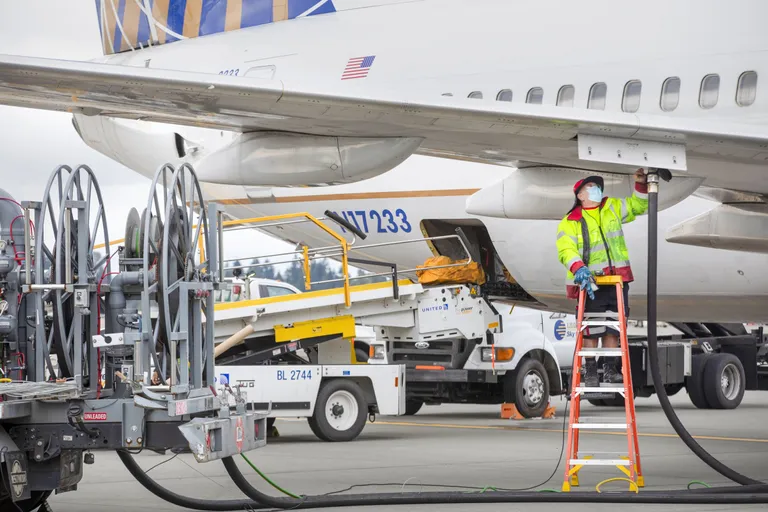
By
and
Despite The Seattle Times’ editorial board’s enthusiasm for sustainable aviation fuels, SAF remain a dangerous fantasy. If we buy into this myth, we will continue expanding air travel instead of what we actually must do: significantly reduce flights until real solutions are in place.
Aviation accounts for at least 10% of the climate-changing greenhouse gas emissions in Washington state, so we definitely need to address this harm. The problem is that these fuels do little to help the environment and the planned growth in aviation would completely overwhelm the small per-gallon greenhouse gas reductions feasible with SAF.
We call this “greenwashing,” when industry treats its climate problem as a public relations crisis, rather than coming up with real solutions to address the harm. According to a recent General Accounting Office report on SAF, “U.S. airlines have outlined potential risks to the airline industry if it is viewed as not sufficiently reducing its greenhouse gas emissions and other climate impacts. One such risk is that consumers may avoid flying, where possible, to reduce their own ‘carbon footprint.’ ” So airlines are trying to make it appear that they have a solution, when they don’t.
Here is what they aren’t telling you.
First, planes using SAF will still warm the planet. Yes, there are lower life cycle emissions associated with SAF because they are produced from plants or waste, rather than from gas or oil. But according to the United Nations’ International Civil Aviation Organization, SAF produce similar amounts of carbon dioxide when burned. Furthermore, the total warming effects of aviation are three times that due to the carbon dioxide emissions, and those other effects would still be present.
Second, SAF are misnamed, as there is no evidence that enough fuel can be sustainably produced in the quantities needed. Indeed, a recent report by the Royal Society in the United Kingdom adds to the evidence that it will not be possible to produce enough SAF to meet aviation demand.
Third, SAF do not prevent the adverse health effects of exposure to particulate matter from airplane exhaust or noise. These exposures have been linked to cancer, heart disease, lung conditions and lower school performance among children. People living near Seattle-area airports and under flight paths are more likely to be people of color and have lower incomes, an environmental injustice.
Fourth, municipal solid waste is under consideration as a potential source of SAF, but its manufacture could be extremely dangerous because landfill waste contains substantial amounts of plastic. A recently uncovered EPA report found that refining some plastics “could emit air pollution that is so toxic, one out of four people exposed to it over a lifetime could get cancer” — hardly what we want here in Washington.
At the same time the industry is trying to convince us that they’ve got the solution, they are also telling us that aviation emissions are a minor contributor to global warming. But the city of Seattle found that in 2018, aviation fuel accounted for a staggering 24% of its carbon dioxide emissions. Remembering that the total warming caused by aircraft is three times that of the carbon emissions, you can see that real climate solutions are desperately needed. Unfortunately, the sustainable fuels being talked about now are not the answer.
The aviation industry is hoping that we won’t notice that its current unconstrained growth accounts for a larger and larger proportion of global warming. Don’t let them get away with it — demand real solutions! In the meantime, we can respond by flying less, just as they feared.
Discussion
We asked 350Seattle to source the following sentence:"But the city of Seattle found that in 2018, aviation fuel accounted for a staggering 24% of its carbon dioxide emissions."
2018 GHG Inventory
"If you take the 1,369,000 for air travel on page 31 and divide it by the total 5,764,000 on page 39, you get 23.75%."